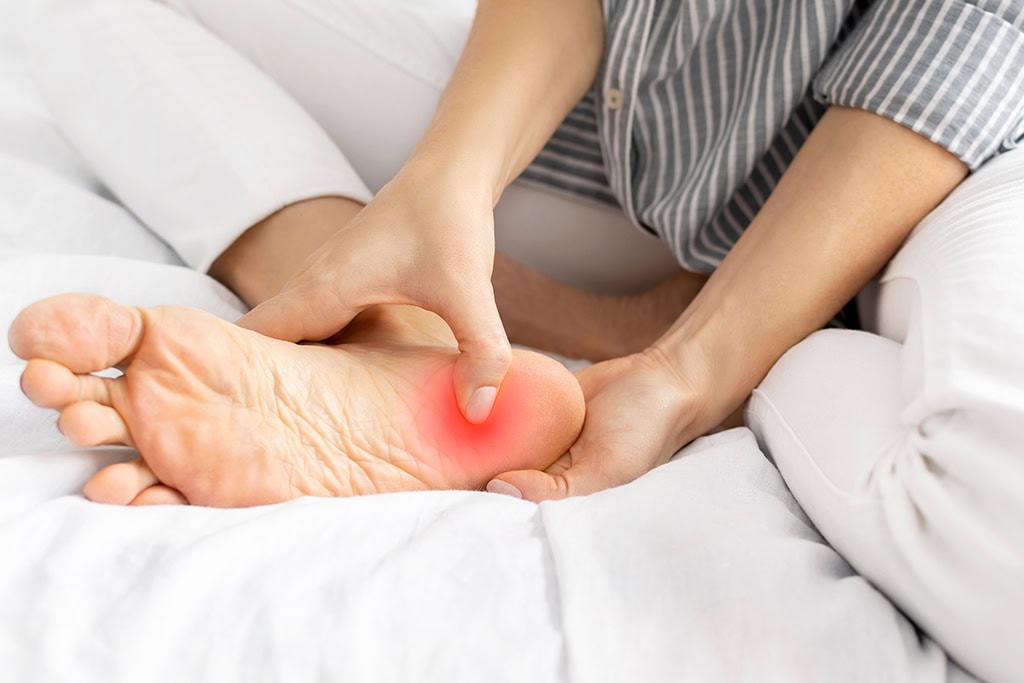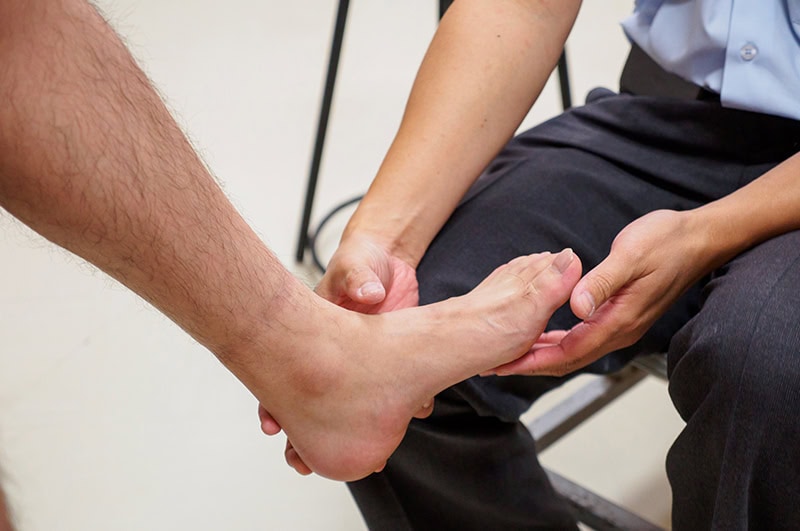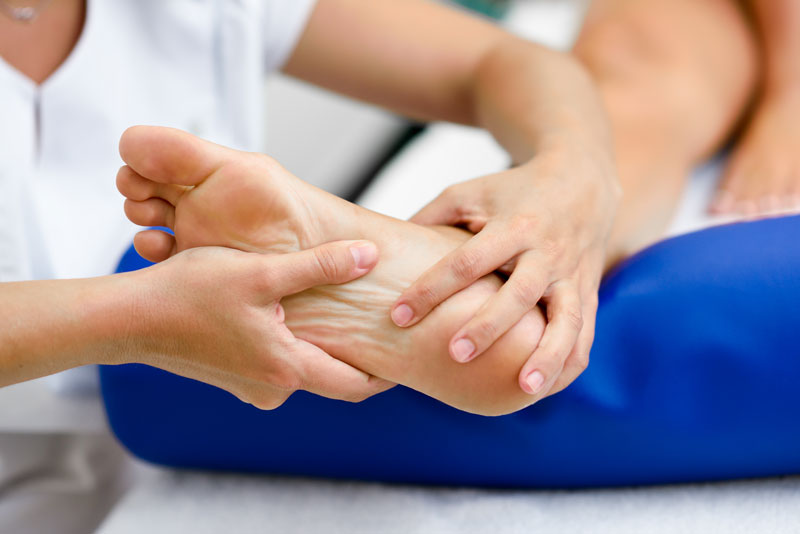Heel pain can make even the simplest movements, walking, standing, or getting out of bed, hard. Two of the most common culprits are heel spurs and plantar fasciitis. While they’re often mentioned together, they’re not the same thing. Knowing the difference between heel spur vs plantar fasciitis will guide you to the right diagnosis, treatment, and long-term relief, especially when symptoms persist after conservative care.
What is Plantar Fasciitis?
Plantar fasciitis is an inflammatory condition of the plantar fascia, the thick ligament that connects the heel bone to the toes and supports the arch of the foot. Repetitive stress, overuse, or biomechanical imbalances can cause tiny microtears in the fascia resulting in heel pain.

This is the number one cause of heel pain in adults. It’s common in runners, people who stand for long periods, and anyone with poor foot alignment, tight calf muscles, or inadequate arch support.
What is a Heel Spur?
A heel spur is a calcium deposit, a bony growth that forms on the underside of the heel bone, usually at the point where the plantar fascia attaches. It develops over time due to long-standing strain and inflammation in the surrounding tissues.
Not all heel spurs cause pain. In fact, many people have heel spurs visible on X-ray and no symptoms. When symptoms do occur they are usually due to soft tissue irritation, not the spur itself.

Heel Spurs vs Plantar Fasciitis: How They’re Related
Because these conditions often coexist it’s no surprise that heel spur vs plantar fasciitis causes confusion. In many cases, plantar fasciitis is the underlying condition. Chronic inflammation at the fascia’s attachment point can eventually stimulate the formation of a heel spur. However:
- Not everyone with plantar fasciitis develops a heel spur
- Not all heel spurs cause pain
- Pain is most often due to inflammation of the fascia, not the spur itself
The key difference between heel spur vs plantar fasciitis is this:
Plantar fasciitis is a soft tissue injury.
Heel spurs are a structural response to chronic stress.
Symptoms of Heel Spurs and Plantar Fasciitis.
Plantar Fasciitis Symptoms
- Sharp or stabbing pain in the bottom of the heel
- Pain worse with the first steps in the morning or after sitting
- Discomfort that returns after long periods of standing or walking
- Tenderness along the arch or heel
Heel Spur Symptoms (when present)
- Localized, dull, or stabbing pain in the center or front of the heel
- Pain that worsens with prolonged activity or weight-bearing
- A sensation of bruising or pressure under the heel
- Sometimes, no pain at all
Understanding these distinct presentations can help you differentiate heel spur vs plantar fasciitis, and what to do next.

Diagnosis: What’s Causing Heel Pain
At Vale Foot and Ankle, diagnosis begins with a thorough exam. We review your history, symptoms, activity level, and foot mechanics. On the physical exam, we check for tenderness, tightness, swelling, and range of motion. If a bony abnormality is suspected we may order an X-ray to rule out a heel spur or other conditions.
Note: Having a heel spur on imaging doesn’t always correlate with pain. That’s why clinical assessment is key when evaluating heel spur vs plantar fasciitis.
Treatment Options for Heel Spurs and Plantar Fasciitis
In most cases both heel spurs and plantar fasciitis can be managed without surgery, especially if treated early. The goal is to reduce strain on the plantar fascia and support the body’s natural healing process.

Conservative Treatment Options
- Rest and activity modification – Reducing impact on the heel to allow inflammation to settle
- Ice therapy – Helps reduce swelling and calm localized irritation
- Stretching programs – Targeting the calf and plantar fascia to improve flexibility and reduce tension
- Supportive footwear – Cushioned, stable shoes to protect the heel
- Custom orthotics – Devices to improve alignment and reduce stress on the heel
- Anti-inflammatory medication – Oral NSAIDs to manage pain and swelling
- Night splints – Keep the foot gently flexed overnight to reduce morning pain
Most people improve within a few months of consistent care. However, for those with chronic, unresponsive pain surgery may be an option.

When Surgery is an Option
As a surgical practice, Vale Foot and Ankle offers advanced treatment options for patients who have tried conservative care. Surgery may be recommended when:
- There is a confirmed tear or degeneration of the plantar fascia
- Pain persists beyond 6 to 12 months despite treatment
- A heel spur is causing significant mechanical irritation or impingement
Surgical procedures may include:
- Plantar fascia release – To relieve tension and reduce inflammation
- Heel spur excision – Removal of the spur when it is contributing to symptoms
- Combined procedures – For cases involving both fascia damage and structural heel deformity
We always strive to restore function with the least invasive option possible, and get you back to pain-free activity with minimal downtime.

Prevention: Long-Term Relief and Recurrence Prevention
To avoid future heel problems we recommend:
- Wear well-cushioned, supportive shoes
- Don’t walk barefoot on hard surfaces for extended periods
- Stretch the calves and plantar fascia daily
- Gradually increase activity levels
- Use orthotics if foot structure or gait contributes to mechanical stress
- Maintain a healthy body weight to reduce foot strain
By following these tips you can prevent both plantar fasciitis and heel spurs over time.
Heel Spur vs. Plantar Fasciitis: Know the Root Cause of Your Pain
When it comes to heel spur vs plantar fasciitis the two often go hand in hand, but the source of pain usually lies in the soft tissue. Heel spurs are a structural response to long-term stress, and plantar fasciitis is a tissue-level injury.
At Vale Foot and Ankle we offer both non-surgical and surgical solutions for your condition, lifestyle, and goals. If heel pain is impacting your life and conservative care hasn’t worked for you, you don’t have to live with it.
Book an appointment with our team to find out what’s really causing your pain, and get back on your feet with expert care.



